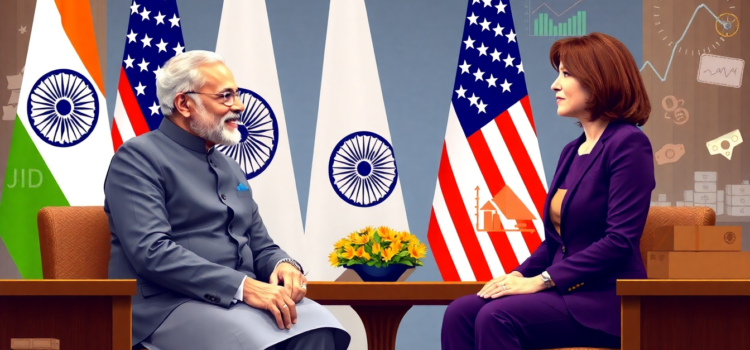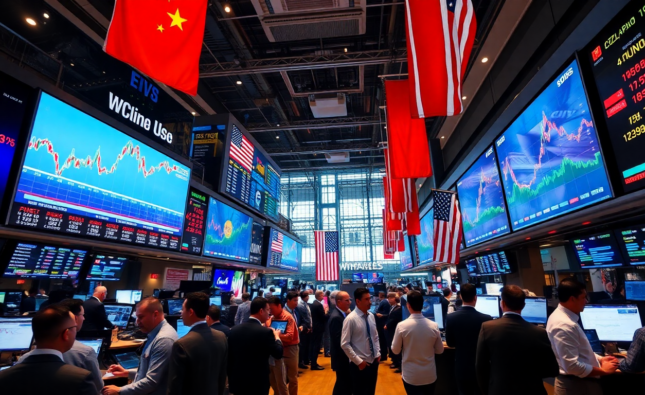
Modi and Vance Advance US-India Trade Talks Amid $500 Billion Goal

The United States and India, aiming to enhance their economic partnership, have embarked on a strategic endeavor with an ambitious target to elevate bilateral trade to $500 billion by 2030. The current trade figures, standing at $129 billion in 2024, have laid the foundation for this significant leap. The recent discussions led by Prime Minister Narendra Modi and Usha Vance mark a pivotal advancement in the Indo-US trade agreement, focusing on sectors such as energy, defense, and technology.
Introduction
Did you know that the United States is India’s largest trading partner, with bilateral trade reaching a staggering $129 billion in 2024? As global economic dynamics shift, the US and India are working tirelessly to double this figure by 2030, aiming for a groundbreaking $500 billion trade target. In this comprehensive article, l will delve into the latest advancements in the Modi Vance bilateral trade agreement and explore the nuances of the Indo-US trade deal negotiations of 2025.
Strengthening Economic Ties: The $500 Billion US-India Trade Target
The US-India trade roadmap envisions more than just doubling the trade figures; it includes fostering deeper economic ties across various sectors. The first phase of the India US trade phase one agreement has seen substantial progress, with agreements spanning energy, critical minerals, technology, manufacturing, and defense. The significant reduction of import duties by India on some 8,500 industrial items, including key U.S. exports like bourbon whiskey and Harley-Davidson motorcycles, points to a cooperative stance in the face of prior trade tensions.
Addressing Trade Tensions and Tariff Pauses
The trade talks between the US and India have been shaped by recent tariff negotiations. The Trump administration initially imposed a 26% tariff on Indian goods, later adjusted to a 10% levy to maintain equity for all nations, including India. This pause in tariff hikes has set a more conducive environment for further trade negotiations, emphasizing the importance of non-tariff barriers India US trade to sustain a balanced economic dialogue.
Defense and Technology: The Cornerstones of US-India Cooperation
Defense collaboration is a critical facet of the US-India trade agenda. A notable development is the $3.5 billion deal for MQ-9B drones and joint initiatives focusing on fifth-generation fighter jets. With India’s defense budget projected to hit $80 billion in 2025, these endeavors underline a robust US-India defense and energy cooperation. Additionally, the CHIPS-PLI semiconductor collaboration India US targets a $50 billion investment by 2025, a testament to the strategic realignment within the Indo-Pacific region.
CHIPS-PLI and Semiconductor Sector Investment
Investments in the semiconductor sector form a critical part of the US-India economic partnership technology. Under the CHIPS-PLI framework, both nations aim for significant collaboration in supply chain realignment and job creation, which is crucial amid global supply chain shifts. The commitment towards a US-India trust initiative technology startups reflects this partnership’s focus on innovation and sustainable growth.
Conclusion
As the US and India continue to forge ahead with their comprehensive trade agenda, the phase one US India trade agreement provides a strong foundation for future growth. By addressing tariff issues and fostering collaboration in defense, technology, and energy, both nations are well poised to achieve their $500 billion trade target by 2030. The strategic realignment in the Indo-Pacific, alongside continued dialogue and mutual investments, will play pivotal roles in reaching this ambitious goal. As negotiations progress, l remain watchful for further advancements in this crucial bilateral relationship.
Your insights on the ongoing US India trade deal efforts are invaluable. Share your thoughts in the comments below or subscribe to our newsletter for regular updates on strategic trade developments.
FAQs
- What is the goal of the US-India trade talks? The current goal of the US-India trade talks is to elevate bilateral trade to $500 billion by 2030, more than doubling the current levels.
- How does the US-India economic partnership benefit both countries? The partnership aims to bolster mutual economic growth through increased trade, defense collaborations, technological advancements, and significant investments in critical sectors such as semiconductors and clean energy.
- What sectors are being targeted in the Indo-US trade deal negotiations for 2025? Key sectors include energy, critical minerals, technology, manufacturing, defense, and semiconductors, under the phased agreements.
- How have tariffs impacted US-India trade relations? The imposition of reciprocal tariffs initially strained relations, but recent negotiations and tariff pauses have fostered a more collaborative environment for trade discussions.
- What is the significance of the phase one US-India trade agreement? This initial phase marks critical progress in solidifying key agreements across various sectors, setting the stage for future growth and a streamlined path towards reaching the $500 billion trade target by 2030.










Comments